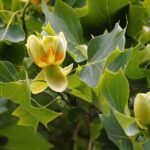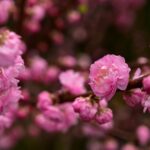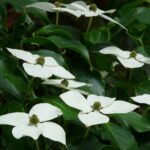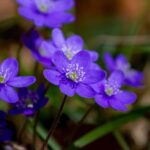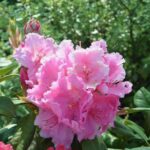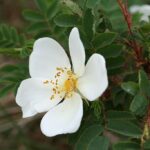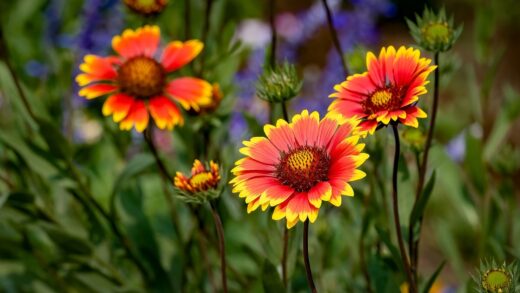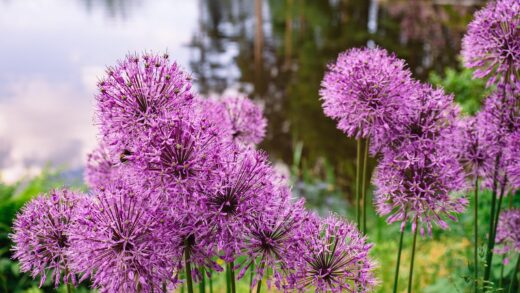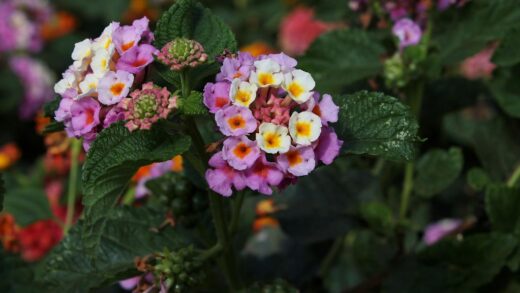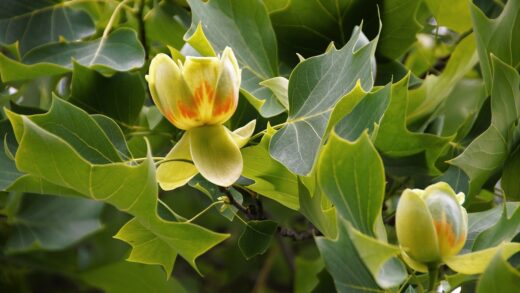Pruning is arguably the most transformative horticultural practice a gardener can apply to a spiraea shrub, directly influencing its size, shape, health, and flowering profusion. Far from being a mere chore, proper pruning is a skillful dialogue with the plant, a way to guide its growth and unlock its full ornamental potential. While spiraea are forgiving plants that can tolerate a fair amount of neglect, a strategic approach to cutting them back can elevate them from a simple space-filler to a stunning landscape feature. Understanding the correct timing and techniques is essential, as the method varies significantly depending on the specific type of spiraea being grown. An ill-timed cut can inadvertently remove an entire season’s worth of flowers, making knowledge the most important tool in the pruning shed.
The fundamental reason for pruning spiraea is to encourage the production of the growth that bears flowers. Different species bloom at different times of the year, and critically, on different ages of wood. Some varieties bloom in the spring on stems that grew the previous year (“old wood”), while others bloom in the summer on the fresh growth of the current season (“new wood”). This distinction is the single most important factor that dictates when and how to prune. Getting this right is the key to ensuring a spectacular floral display year after year.
This article will serve as a comprehensive guide to the art and science of pruning spiraea. We will clearly delineate the two main groups of spiraea and provide detailed, step-by-step instructions for the appropriate pruning techniques for each. Beyond just promoting flowers, we will also explore how pruning can be used to rejuvenate old, overgrown shrubs, maintain a compact and tidy form, and improve the overall health of the plant by removing dead or diseased wood. The goal is to demystify the process and empower gardeners with the confidence to make the right cuts at the right time.
By mastering these pruning principles, a gardener can take active control of their spiraea’s performance. It is a practice that yields immediate and highly visible rewards, transforming a tangled, underperforming shrub into a well-structured and floriferous specimen. Proper pruning not only improves the aesthetic quality of the plant in the short term but also contributes to its long-term vigor and longevity in the garden, making it one of the most rewarding skills a gardener can develop.
Identifying your spiraea type
Before a single cut is made, it is imperative to identify which type of spiraea you are growing, as this will determine the entire pruning strategy. Spiraea can be broadly divided into two categories based on their blooming time: spring-blooming and summer-blooming. This is the most crucial distinction to make. If you are unsure which type you have, simply observing its flowering cycle for one season will provide the answer. This patient observation is the first step toward successful pruning.
More articles on this topic
Spring-blooming spiraea are typically the species with large, cascading clusters of white flowers that create a dramatic, fountain-like effect. Classic examples include Vanhoutte spiraea (Spiraea x vanhouttei) and bridal wreath spiraea (Spiraea prunifolia). These varieties produce their flowers on “old wood,” which means the flower buds were formed on the stems that grew during the previous summer. This biological fact has profound implications for pruning timing; if you prune these shrubs in the fall or winter, you will be cutting off all of the next spring’s flowers.
Summer-blooming spiraea, on the other hand, produce their flowers on “new wood.” This means the flowers form at the tips of the stems that grow in the current season. This group includes many of the most popular modern cultivars, such as the Japanese spiraea (Spiraea japonica) varieties like ‘Goldmound’ and ‘Anthony Waterer’, as well as Spiraea bumalda types. Their flowers are typically pink, red, or white and appear in flattened or cone-shaped clusters from early summer until fall. Because they bloom on new growth, they offer much more flexibility in pruning timing.
Once you have determined whether your spiraea blooms in the spring on old wood or in the summer on new wood, you can proceed with the correct pruning plan. This identification step cannot be over-emphasized. Applying the wrong technique to your shrub is the most common reason for a “non-blooming” spiraea. Taking the time to understand the plant’s natural cycle is the foundation upon which all successful pruning is built.
Pruning spring-blooming varieties
The cardinal rule for pruning spring-blooming spiraea is to wait until immediately after they have finished flowering. This timing is critical because it allows the gardener to shape the plant and control its size without sacrificing the next year’s floral display. Once the flowers have faded, the plant will spend the rest of the growing season producing the new stems that will carry the following spring’s blooms. Pruning right after flowering gives the shrub the maximum amount of time to generate and mature this new growth.
More articles on this topic
The primary goal when pruning these types is to maintain their natural, graceful, arching habit. This is best achieved through a process of thinning and selective renewal. Start by removing any branches that are clearly dead, damaged, or diseased, cutting them back to their point of origin or to a healthy, outward-facing bud. Next, look for any branches that are crossing or rubbing against each other, as this can create wounds and potential entry points for disease. Remove the weaker or less well-placed of the two crossing branches.
To keep the shrub vigorous and prevent it from becoming a tangled thicket of old, unproductive wood, practice renewal pruning. This involves identifying the oldest, thickest canes—often distinguished by their darker, woodier bark—and removing about one-third of them right down to the ground. This encourages the plant to send up strong new shoots from its base, constantly renewing the structure of the shrub. By following this one-third rule each year, you will completely rejuvenate the entire plant over a three-year cycle without ever drastically altering its appearance.
What should be avoided with spring-blooming spiraea is shearing them into a formal, geometric shape. This practice destroys their beautiful, natural fountain-like form and often results in a dense outer canopy of leaves with a dead, twiggy interior. Shearing also indiscriminately removes both old and new wood, which can lead to a reduction in flowering. A more thoughtful, selective approach that respects the plant’s inherent habit will always yield a healthier and more aesthetically pleasing result.
Pruning summer-blooming varieties
Summer-blooming spiraea, which flower on new wood, offer a much wider window for pruning and can be managed with a more straightforward approach. The best time to prune these varieties is in the late winter or early spring, just before new growth begins to emerge. Pruning at this time stimulates the plant to produce a strong flush of new stems, and since these are the stems that will bear the summer flowers, this practice directly encourages a prolific bloom display.
For many of the compact, mounded Japanese spiraea types, a hard annual pruning is very effective. This can involve cutting the entire shrub back to within four to six inches of the ground. While this may seem drastic, the plant will respond by vigorously pushing out fresh new growth from the base, resulting in a compact, dense shrub with abundant flowers at the tips of every new stem. This hard pruning, often called coppicing, is an excellent way to maintain a tidy shape and prevent the shrub from becoming woody and open at its center.
Alternatively, a less severe method is to cut the plant back by about half to two-thirds of its height, making sure to shape it into a pleasing, rounded form. This is also done in late winter or early spring. This approach is suitable for gardeners who may be hesitant to cut the plant back so hard or for situations where a slightly larger plant is desired. In either case, it is also important to use this opportunity to thin out any particularly weak, spindly stems and remove any dead wood that may have occurred over the winter.
Throughout the blooming season, summer-blooming spiraea benefit greatly from a practice called deadheading. This involves removing the faded flower clusters as soon as they turn brown. On many varieties, this will not only neaten the plant’s appearance but also encourage it to produce a secondary flush of flowers later in the season, extending its ornamental value. Simply follow the spent flower stem down to the first set of healthy, full-sized leaves and make a cut.
Rejuvenation pruning for overgrown shrubs
Over time, any spiraea, whether spring- or summer-blooming, can become overgrown, woody, and unproductive, with diminished flowering and a crowded, tangled center. For these neglected shrubs, a more drastic technique known as rejuvenation pruning can restore their vigor and beauty. There are two main approaches to rejuvenation: a gradual, three-year renewal or a single, hard cut. The choice depends on the gardener’s patience and the severity of the situation.
The gradual renewal method, as described for spring-blooming types, is the safest and most recommended approach for rejuvenating an overgrown shrub. Over the course of three years, you systematically remove one-third of the oldest, thickest stems each year, cutting them right back to the ground. This is best done during the dormant season. By the end of the third year, the entire shrub will be composed of new, vigorous, and productive stems, all without leaving a large, empty space in the garden at any point.
The second method is a hard rejuvenation, which involves cutting the entire shrub down to a height of about four to six inches from the ground. This is a one-time, drastic measure that should only be performed during the dormant season (late winter or early spring). This technique is generally very effective for tough, summer-blooming varieties, which will respond by sending up a wealth of new shoots from the base. For the more delicate, arching spring-blooming types, this method can be riskier and the gradual approach is often preferred.
After a hard rejuvenation pruning, the new growth will require some follow-up care. As the new shoots emerge, you may need to thin them out, selecting the strongest and most well-spaced stems to form the new framework of the shrub. It is also important to provide adequate water and a light application of a balanced fertilizer in the spring to support the rapid flush of new growth. While the plant will not flower in the first season after a hard pruning (especially spring-blooming types), this drastic measure can effectively reset the clock on an old shrub, giving it a new lease on life.








